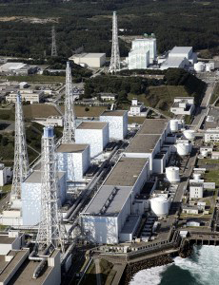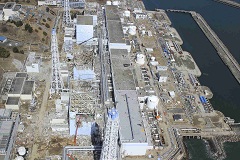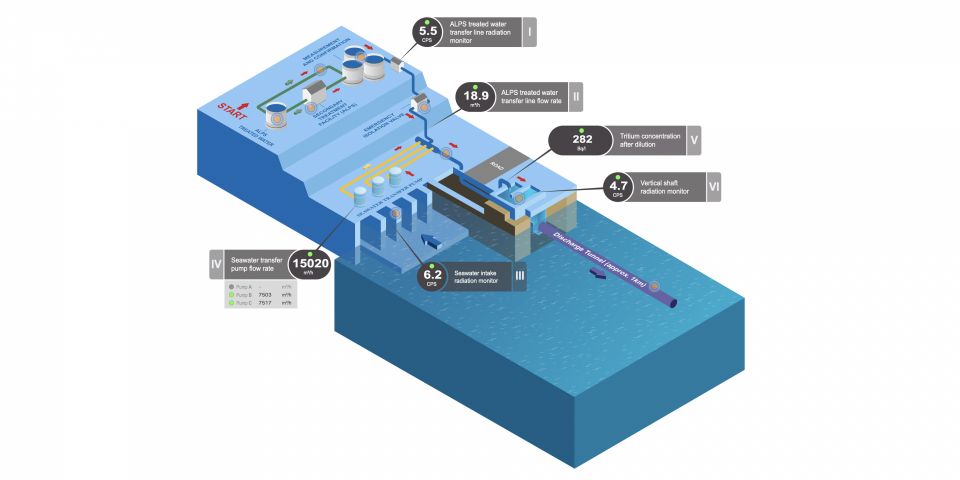Can we repeat facts about Fukushima often enough to overcome fears?
We are within one week of the one year anniversary of the Great North East Japan Earthquake and Tsunami. That powerful punch from nature slowly destroyed four out of six of the nuclear units at Fukushima Daiichi while the world watched with rapt attention.

However, as many nuclear experts predicted at the time of the accident, the defense-in-depth strategy worked well. The end results have been far better than were predicted using some of the fantasy-inspired "worst case scenarios" propagated by antinuclear activists and by researchers working several decades ago - before much data had been gathered and digested.
The painstakingly-gathered empirical data from this unfortunate theory-to-practice exercise have validated the recently released State of the Art Reactor Consequences Analysis, which computed a one in a billion chance that an accident at typical licensed nuclear reactors would harm anyone in the general public.
The total quantity of long-lived radioactive isotopes released from all three of the melted cores was approximately 11 kilograms. None of the material stored in the spent fuel pools was released. There has not been, and never will be, any injuries more serious than a mild sunburn to two workers, from the radiation released into the environment from the melted nuclear fuel inside the plant pressure vessels and containment structures.
 Despite the lack of any negative radiation health effects, there are people who relish in stimulating as much fear, uncertainty, doubt and stress about radiation and nuclear energy as they possibly can. They are working overtime to obscure any good news and to label the people who share truthful information as nuclear industry PR hacks, apologists, or even worse.
Despite the lack of any negative radiation health effects, there are people who relish in stimulating as much fear, uncertainty, doubt and stress about radiation and nuclear energy as they possibly can. They are working overtime to obscure any good news and to label the people who share truthful information as nuclear industry PR hacks, apologists, or even worse.
While participating in discussion threads associated with recent reports published in the Wall Street Journal, the New York Times, Time magazine and Scientific American, I have seen nuclear supporters accused of killing babies, being mere industry shills, and of being completely insensitive to the continued suffering of the Japanese people.
Unlike people who have been trained in nuclear sciences and engineering, facts do not matter as much to antinuclear activists as repeatedly telling the tale they want people to hear. Greenpeace has released a report titled Lessons from Fukushima featuring a chapter by Arnie Gundersen that claims that the nuclear industry is a prime example of regulatory capture, despite being one of the most tightly regulated industries in the US, Europe and Japan.
Karl Grossman, a man who has been making a living on the antinuclear lecture and book circuit since the Three Mile Island accident, continues to claim that Fukushima will be worse than Chernobyl. He also claims that Chernobyl has already killed nearly a million people, instead of the less than 100 reported by the UN Scientific Committee on the Effect of Atomic Radiation report as having died in the 25 years since the accident.
Like Helen Caldicott, Grossman continues to spout the belief that Yablokov's thoroughly discredited book titled Chernobyl: Consequences of the Catastrophe for People and the Environment is the definitive work on the 1986 accident. In the imaginary world where Caldicott and Grossman spend their time, the thousands of other researchers who studied the accident and came to completely different conclusions were either misinformed, bought by the powerful nuclear industry, or just plain lying.
The antinuclear opposition also spreads fear by describing effects using unfamiliar, frightening units. Instead of saying that a total of 11 kilograms of material (out of approximately 60,000 kilograms of fuel per unit) escaped from the reactor pressure vessels, people who discourage the beneficial use of nuclear energy say that the plants "spewed" 36,000 terabecquerels of radioactivity. (A terabecquerel of Cs-137 has a mass of 3.2 grams.)
If that number does not scare people thoroughly enough, some nuclear opponents compare the cesium emissions from Fukushima to the cesium emissions from the bomb dropped on Hiroshima. The Hiroshima bomb produced its explosive power fissioning about 1 kilogram of U-235. The 6.3% fission yield for Cs-137 means that Little Boy, the Hiroshima bomb, produced a little less than 30 grams of Cs-137. (89 terabecquerels at 3.2 gms/terabecquerel).
In the eyes of people who hate nuclear energy, that means that the melted Fukushima reactors did not release a mass of radioactive cesium that is about half the weight of the backpack I routinely carry when I spend a weekend on the Appalachian Trail. Instead, those reactors released 400 times as much radioactive cesium as was released by The Bomb!
That is a great piece of propaganda. It sounds really bad while using very few words. Contradicting the scary statement with logical reasoning requires too detailed of an explanation to be useful to a newspaper or television show.
There is, however, reason to be hopeful that the end result of the Fukushima accident on nuclear energy will be less damaging to the ultimate success of the technology than the end result of the Three Mile Island and Chernobyl accidents.
Unlike the period following the Three Mile Island accident, the public conversation has broadened considerably. Discourse is no longer dominated by broadcast television networks or major printed newspapers. It is not dominated by the people who have been able to spend years working their way to the front of journalist contact lists by always being ready with pithy, if often false, quotes.
Instead, people who understand nuclear technology are supporting each other, using a wider variety of media access points and are participating in active public outreach campaigns.
On March 8 at 10AM EST, the American Nuclear Society, a professional society with 11,000 members, will be holding a news conference at the National Press Club to announce the release of its long awaited report on the lessons learned from the accident.
I am looking forward to reading that report and then cooperating with other nuclear professionals to ensure that its factual material is repeated as often as the tripe that emanates from the mouths and keyboards of Caldicott, Grossman, Wasserman, Gunter, Lovins, and so many other professional opponents of nuclear energy.
Like many of my colleagues, I feel a sense of personal responsibility to do something to alleviate the suffering of the victims who have a far greater probability of negative health effects from irrational radiation fears than they do from radiation itself. Spending some of my spare time to ease their fears, reduce their stress and enable their safe return to their ancestral homes is an investment worth making.
There has been one result from the accident that I never would have predicted. A year ago, I could not imagine that two countries (Germany and Japan) that were famous for their technological skills and rational decision making would have decided to shut down undamaged reactors in favor of spending a growing share of their national income to make the fossil fuel industry increasingly richer. If anyone can think of ways to influence the decision process in those two key countries, I am listening.

Adams
Rod Adams is a pro-nuclear advocate with extensive small nuclear plant operating experience. Adams is a former engineer officer, USS Von Steuben. He is the host and producer of The Atomic Show Podcast. Adams has been an ANS member since 2005. He writes about nuclear technology at his own blog, Atomic Insights.



